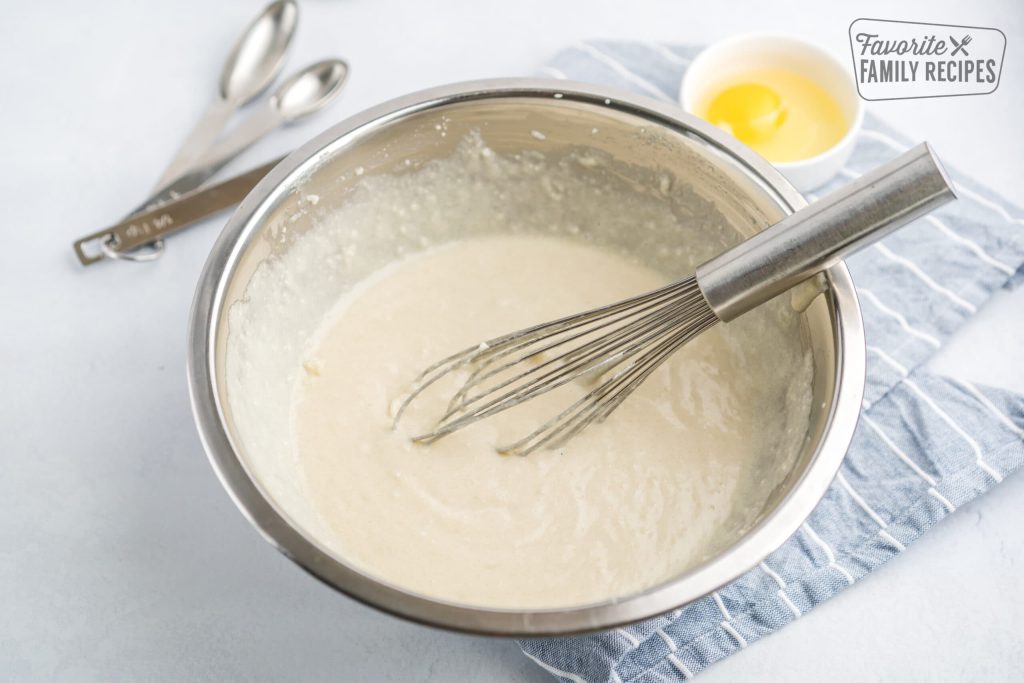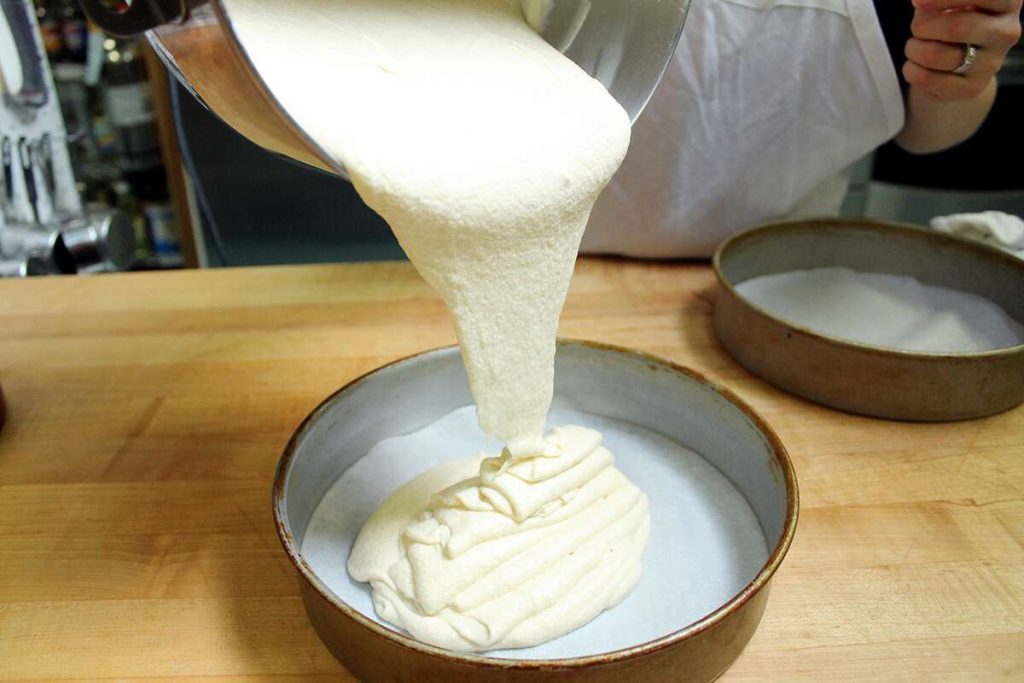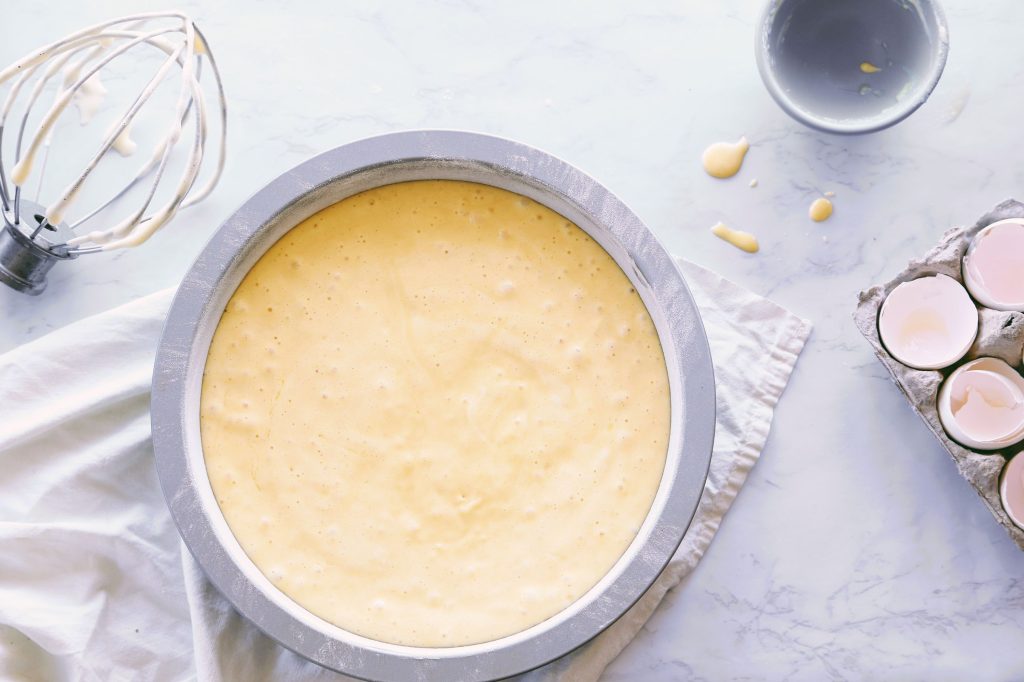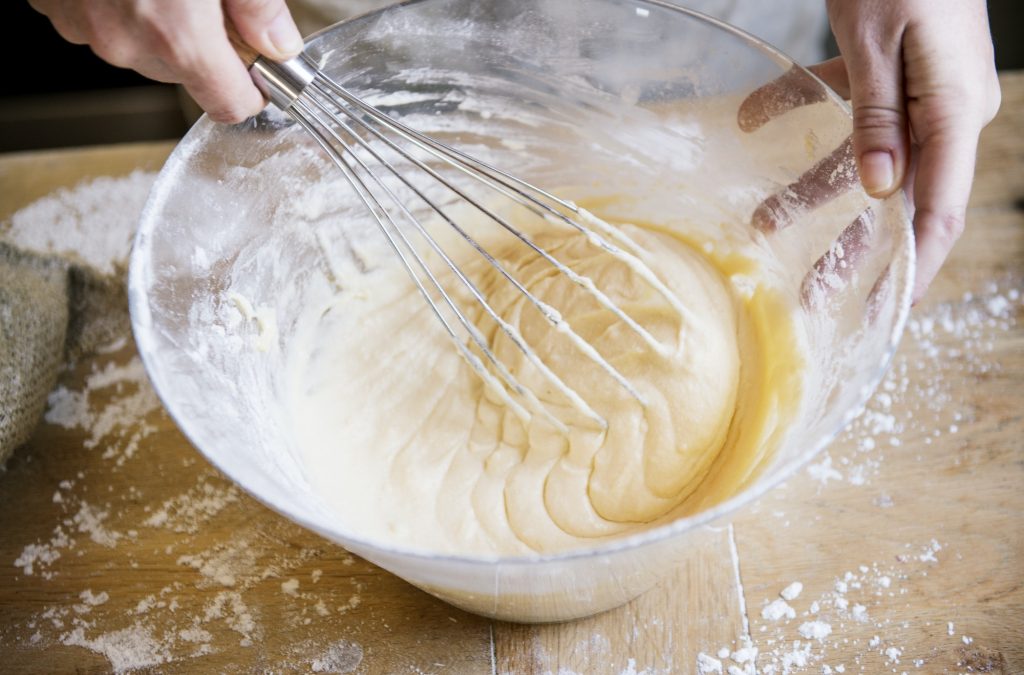Baking cake can be a lot harder than it sounds, especially for beginners. There is a lot to learn and understand.
There’s the measure of recipes, the size of the pan, the amount of heat, the consistency of the batter, etc. Talking about the consistency of the cake, there have been various questions about the consistency of a cake batter and nobody seems to have found the right answer to this.
If you are also curious about how thick your cake batter should be, then you should read it till the end. We have some answers for you.
We suggest that before finding out how thick your cake should be, you should make up your mind about the type of cake you want to bake. This will guide your recipe as well as the consistency of the batter. We did some research work for you and below are various cake thicknesses and the cakes that fall in their category.
Cake Batter Consistency Guide
The truth is that the thickness of your cake is dependent on the time of cake you are making. It is not possible to make use of the same cake batter consistency for all cake types, bearing in mind that you are using different recipes.
On a general note, your cake batter should be thick and thin enough to pour into your baking pan.
1. Thin Batter

When batters are thin, it is often assumed that the cake will not rise. However, this is not true for all cake kinds; some require a thin batter to achieve the desired result. If there is no leavening agent in the batter, your cake will be dense and not rise; but, if you use a leavening agent, your cake will rise regardless of how the batter comes out.
Here are cakes that require thin and runny batter.
1. Chocolate Cake
Instead of butter, the chocolate cake requires oil, which doesn’t solidify like butter. As a result of this, you find that your chocolate cake batter becomes runny. Alongside this, the chocolate cake often requires warm water or coffee and this is to help dissolve the cocoa powder, which makes the chocolate batter runny.
If your batter turns out thin and runny, don’t panic, just put the mix into the oven and let the magic happen.
2. Cheesecake
Cheesecake requires little or no flour at all, usually; the recipe for a baked cheesecake requires cream cheese, cream, eggs, and sometimes yogurt. After adding all of these together, it is unlikely that your batter will be thick; instead what you get is a loose and runny batter. This is normal, and you should not panic, just continue with the process and bring your cake to reality.
2. Thick Batter

It is widely believed that thick batter produces a dense and stiff cake that dries out quickly. Although this is true, you may be surprised to learn that some cakes necessitate a thick batter, which is thicker than other cake batters. A light and fluffy cake is usually the result of this batter’s thickness.
1. Victoria Sponge
Although it is a sponge cake, the Victoria sponge is quite different from the other types of sponge cakes. The most important reason is that this cake does not rely on eggs as a leavening agent. The Victoria cake requires a very thick batter, with only a small amount of water to loosen it up. The batter results in a tender, moist, and buttery yellow cake.
2. Butter Cake
One of the uses of butter in cake batter is to make the batter thick. When making butter cake, the recipe is the same as pound cake, however, it uses more butter than other ingredients, which makes the batter thicker, resembling a pancake batter.
3. Red Velvet
A lot of fat is required to get the wonderful, delicate texture of red velvet cake, and butter is often the go-to for many people. The butter and sugar are combined before being added to the dry and wet components. The red velvet batter becomes thick and extra aerated as a result of all of these, as well as the use of bicarbonate soda and acids as leavening agents.
3. Airy Batter

The frothy batter is another name for the airy batter. This sort of batter is light and fluffy, resulting in light and airy cakes. Eggs or egg whites whisked combined with sugar at a high speed until soft enough, are frequently used to make the airy batter. To keep the mixture light, a small amount of flour is added. Cakes that can be made with airy batter are listed below.
1. Sponge Cake
Sponge cakes, as they are called are spongy and this is a result of the ingredient in them. The egg is beaten at a very high speed for a while, while the egg is still high, the dry and wet ingredients are added. To ensure that the cake does not come out flat, the other ingredients must be added while the egg hasn’t deflated.
2. Chiffon Cake
Chiffon cake is light and has a similarity to angel food cake; however egg yolk is added to its recipe. The egg white is also beaten at a high speed to create a glossy, fine texture. The egg yolks and other ingredients go in gently, ensure you do this while the egg white hasn’t deflated.
The batter will come out looking glossy, pale, and fluffy.
Cake Batter Consistency FAQs
Here are the faqs to help you further on how thick cake batter should be.
What Happens If The Cake Batter Is Too Thick?
Thick batter often results in a stiff and dense cake. However, this only happens if the cake does not require a very thick batter. Some cakes require that the batter be very thick, and it is to the end that the cake comes out light, fluffy with tight crumbs.
Is Cake Batter Supposed To Be Thick?
The thickness of your cake batter is dependent on the type of cake you are baking. A regular cake should be thick, however, it should be able to come off into the pan easily. Ensure to check the above directly on the type of batter that fits each cake.
Can You Let The Cake Batter Sit Overnight?
It is not advisable to let your cake batter sit overnight before baking. This is because the leaving agents often lose their effect when they are exposed to moisture and this will keep the cake from rising.
What Causes A Cake To Be Thick?
The thickness of a cake is commonly believed to be a result of too much flour, however, this is not always true. Your cake can become thick as a result of too much liquid, too little leavening agent, too much liquid, and baking at a slower rate among others.
How Long Should You Beat Cake Batter?
The amount of time used for beating your cake is dependent on the type of cake you are baking, however, on a general note, you should beat for no more or less than two to five minutes.
Why Should You Not Over Mix Batter?
Mixing your batter is good; however, you should not over mix your batter for a few reasons. The first is that mixing too much can bring in too much air into your batter, and it can become aerated. Also, over-mixing can make your cake gummy, and chewy, which occurs as a result of extra gluten development.
Should Cupcake Batter Be Thick Or Thin?
The recipe you are using should guide you on how thick your cupcake should be, however, your cupcake should be thick and thin enough to pour into the pan.
How Do You Make Cake Batter Thicker?
If you find your cake batter to be thick, we suggest you beat it a little more, this will help air get into the batter and will thicken it up. You can also add a little flour; beat together on a low to medium speed.
Final Thoughts
You must know the type of cake you want to bake before you find out what level of thickness is ideal.
This will guide you and help you make the best cake. More cakes fit into the categories above, if your cake of choice isn’t there, you can make more research to find out where it falls.

